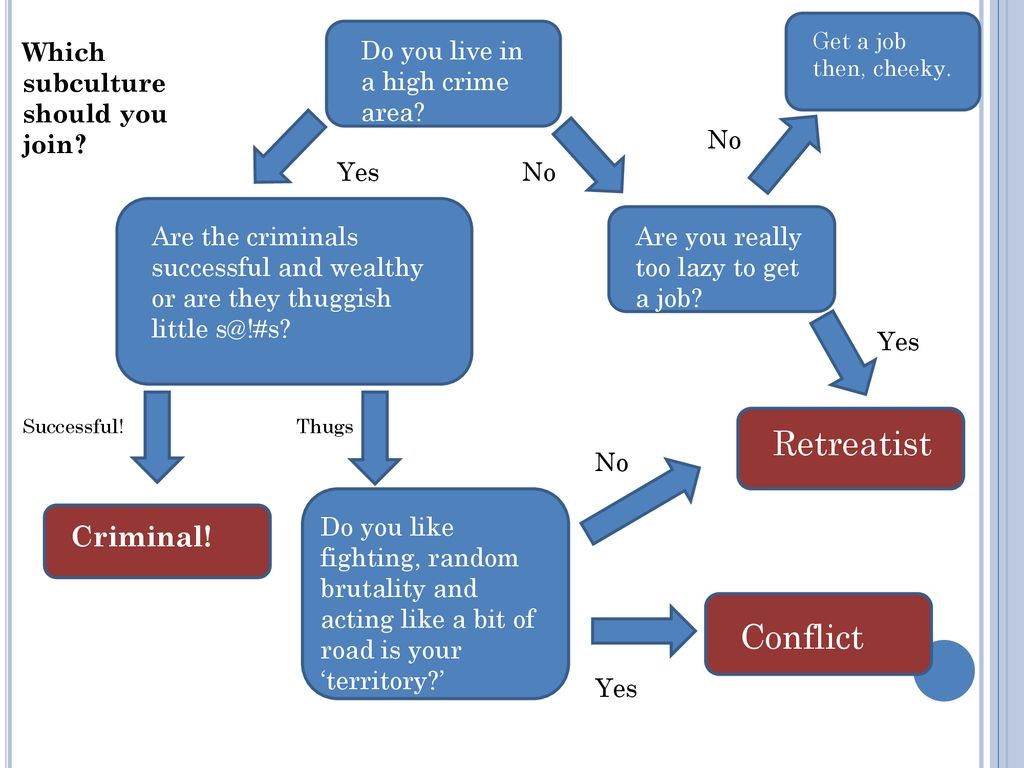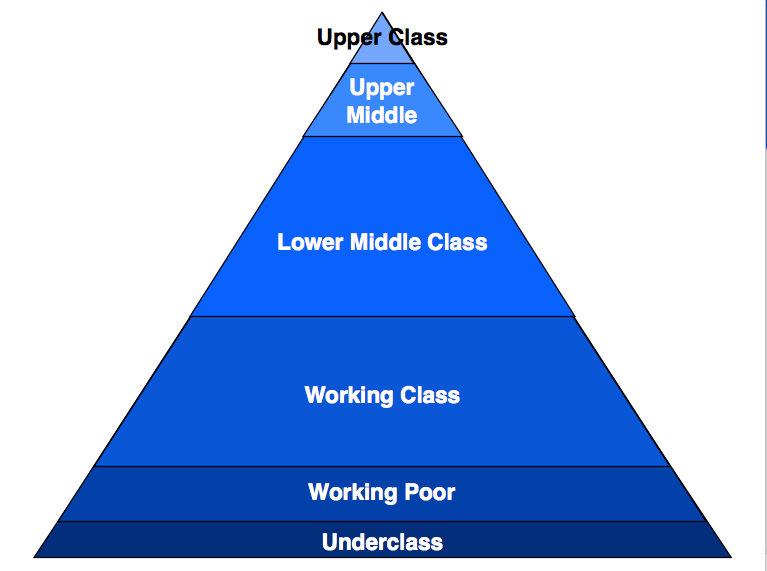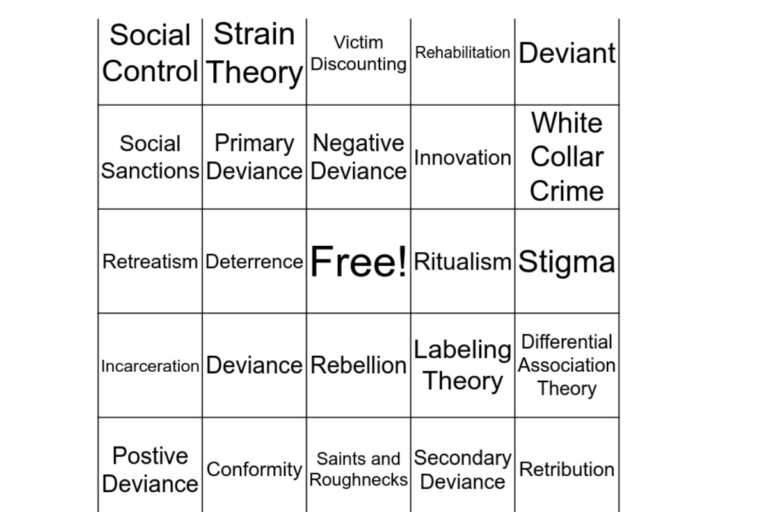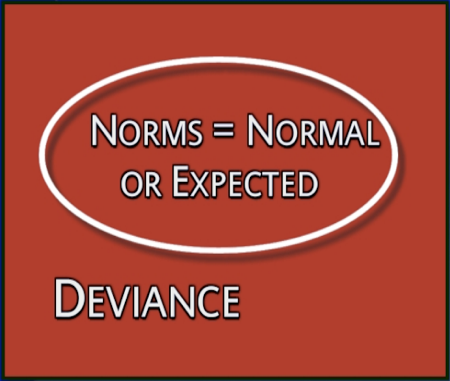Theory of Differential Opportunity- All you Should Know
Introduction
Every person has the same opportunity to achieve great things. Every person has the same access to resources and information, but not everyone will benefit from that.
Differential opportunity theory explains why some people will succeed in life and others won’t, even if they have the exact same skills. If they can use their skills in different circumstances, they’ll behave differently.
According to differential opportunity theory, every individual has an equal opportunity to achieve great(er) things in life, regardless of the demographic factors: but not everyone will take advantage of this. To understand this, we need to know how individuals behave in the labor market.
This theory was formulated by Richard Cloward and Lloyd Ohlin, two criminologists at Columbia University in the early 1960s. They suggest that there are three different types of crimes:
- Crimes of need: These crimes are usually committed by someone who can’t make enough money legally, so they resort to illegal actions.
- Crimes of frustration: These types of crimes happen when someone has been pushed to the limit, so they take justice into their own hands.
- Crimes of opportunity: These types of crimes are committed by people who have the opportunity to commit a crime a lot because their position puts them above suspicion.
These three categories are inspired by the theory of differential association, which suggests that criminal behavior comes from a person’s contact with other criminals.
Cloward and Ohlin developed the differential opportunity theory and defined the delinquent subcultures of conflict, crime, and retreatism.
Conflict subculture
The conflict subculture is the type of criminality that resorts to violent behavior. It includes street gangs and members of motorcycle clubs or other violent organizations.
In this subculture, individuals are usually labeled as “delinquent” because they associate with criminals.
Crime subculture
The crime subculture of delinquency is the most common and includes people who commit crimes for economic gain.
A person belonging to this subculture is usually labeled as delinquent because they’re connected with people who’ve committed crimes in the past.
Retreatist subculture
The retreatist subculture is a subculture in which individuals withdraw from society and become alcoholics or drug addicts.
In this subculture, members are labeled as delinquent because they’re associated with people who’ve committed crimes in the past.
Differential opportunity theory suggests that these three subcultures – conflict, crime, and retreatist – are ways to commit crimes successfully depending on how many opportunities a person has to commit a crime.
For example, the conflict subculture is more likely to resort to an individual’s violent behavior. Also, their past experiences – like a person who has been bullied in school, would join a street gang.
Sociological Theories related to the Differential Opportunity Theory
Differential association theory
Differential association theory was created by Edwin Sutherland, who suggested that criminal behavior is a product of social interactions. The person committing the criminal acts and the people around them play a role in criminality.
So, suppose we apply this to differential opportunity theory. In that case, we’ll understand that the person who doesn’t have access to these social interactions won’t have any opportunity to be influenced by them.
Differential association theory is based on the assumption that people are not naturally criminals. They need to have the right social influences. In contrast, differential opportunity theory states that everyone has the same opportunity to achieve great(er) things in life, regardless of the demographic factors. Still, not everyone will take advantage of this.
Social learning theory
Albert Bandura’s social learning theory is also related to differential opportunity theory. Bandura stated that children learn both good and bad behaviors by observing other people. According to this theory, a child will not learn only by how his parents behave: the people around him, in general, can influence how he’ll behave as an adult.
Differential association theory and social learning theory are similar. Still, they have differences: while the differential association theory suggests that behavior is a product of social influences, the social learning theory suggests that it’s a product of social and personal factors.
Social learning theory is generally applied to cases of criminal behavior, while differential opportunity theory is not limited to them. According to this theory, deviant behavior won’t only come from the people who influence us but also from our society.
Anomie theory
Anomie’s theory suggests that society can influence individual behavior. Émile Durkheim came up with this idea in the 19th century, and it’s still relevant.
Anomie theory is related to differential opportunity theory in that they both suggest that society can influence individual behavior. The main difference is that the differential opportunity theory suggests that this influence can be good or bad, while anomie theory only states that it’s negative.
Differential opportunity theory is related to other theories because it can be used as an alternative explanation for criminal behavior. But, it can also be used to explain other types of behavior that are considered deviant.
Social disorganization theory
Social disorganization theory suggests that neighborhoods with high levels of crime and poverty can influence individual behavior. This theory is related to differential opportunity theory; both suggest that certain areas will have more or fewer opportunities. These differences can encourage or discourage people from interacting with specific groups.
According to the social disorganization theory, certain institutions will be lacking in many areas with high crime and poverty rates. These institutions can include but aren’t limited to good schools, a reliable police force, and a functional judicial system.
Less privileged persons turn to illegitimate means of finding worth and a sense of belonging. The attempt to find acceptance by the cool people’s club has led any to criminal acts.
The deviance strain theory
According to the deviance strain theory, there’s a link between delinquency and economic factors. The theory suggests that high rates of unemployment are associated with higher deviance rates.
This theory states that lower-class criminals want what the middle class has, and they want it right now. This puts pressure on unemployed people, causing them to commit crimes more often.
Differential opportunity theory can be seen as an alternative to this theory. The deviance strain theory states that people in a lower class might feel the need to commit crimes to achieve the things they want.
On the other hand, differential opportunity theory suggests that this depends on the opportunities available to them. For example, a drug dealer might not achieve the same things as a person who is selling legal items.
In this case, the drug dealer sees drugs as their way out of financial woes. Since the offender believes that legitimate means of making money are out of their reach, they justify their deviance.
Social bond theory
Travis Hirschi developed the social bond theory. This theory suggests that people who have an investment in society are less likely to commit crimes.
There’s a direct link between crime rates and low social bonding. When fewer people engage in legitimate activities, there will be more criminal behavior. The connections among individuals within a society can directly impact the opportunities available to them.
Differential opportunity theory is related to this theory; socially bonded people are more likely to have their legitimate needs fulfilled. Those who lack social bonds won’t be able to achieve what they want. People with low social bonds will thus turn to illegitimate activities for money and satisfaction.
Social Control and Differential Opportunities


Social control is the process of controlling deviant behavior. Differential opportunity theory is related to this because one of the factors in social control is opportunity.
According to this theory, the availability of opportunities affects criminal behavior. For example, there are more robberies when it’s dark outside than when there’s light. If there are no street lights, there’s more opportunity for robbery.
Differential opportunity theory focuses on the fact that crime is a product of individual choice and what opportunities are available to them. This suggests that people can make a different choice when the opportunity is not there for them.
For example, a person might steal from a store when they need money and when it’s easy to do so. But the same person would probably not steal from the same store if they were employed and financially stable.
Exercising social control is a way to ensure people can’t take advantage of the available differential opportunities. By doing so, it is possible to prevent crime from happening.
The Role of Environment in Criminal Learning
Differential opportunity theory is related to the role of the environment in criminal learning. According to this, some people want to become criminals so they can mimic their role models.
This theory suggests that people learn from others’ mistakes. For example, someone might see a famous person on television committing a crime and think it makes them look cool and tough. They might then decide to follow in the footsteps of that person and commit a crime themselves.
Differential opportunity theory is related to this by stating that certain environmental factors can contribute to criminal learning. These include:
- Easy access to resources,
- Lack of opportunities
- People who are role models for individuals who want to become criminals at some point in their lives.
By controlling the environment, it is possible to prevent criminal learning from taking place. This control can also positively impact crime rates by making sure that people don’t commit crimes in the first place.
Most offenders from low-income backgrounds blame their delinquency on the kind of environment they were born or raised. Societal norms of a particular community might also contribute to this.
Differential opportunity theory suggests that the availability of resources contributes most to crime rates in low-income communities. It adds that, by controlling these resources, it is possible to prevent criminal activity from taking place.
This means that all would-be criminals need is a bit more patience, and they’ll be able to reap the benefits of resources, too.
There are several explanations for why some people from low-income communities turn into criminals while others do not. Some theorists suggest that these people are just trying to fulfill their needs.
You may be interested in The Women’s Movement
Economic Disadvantage and Differential Opportunity Theory
An economic disadvantage might make deviance more likely to happen for some people. It can be difficult for people in lower socioeconomic backgrounds to find employment. This might leave them feeling stuck while their peers can go on and achieve more things in life.
This lack of opportunity can lead to some people committing crimes to achieve what they want without legal means. For example, someone might feel that they’re being held back because they can’t find a job. In this case, stealing might give them a sense of power and achievement.
According to differential opportunity theory, this can happen when there is a lack of opportunities available to certain people. For example, it’s more difficult for some people to get a good education that leads to employment than others.
By taking away some of the available opportunities to people, it is possible to reduce crime. It might also be possible to prevent crime from happening in the first place by giving everyone equal opportunities.
Co-offending and Criminal Connections
Cloward and Ohlin explained the phenomenon of co-offending or criminal connections. These are created by someone’s desire to commit a crime and the need for protection against the law.
The relationships formed between people to make criminal connections are part of the differential opportunity theory. According to this, co-offending and criminal connections can be identified by their functions and characteristics.
Co-offending
In a co-offending relationship, individuals who engage in crime commit crimes together so that they can get better protection against law enforcement agencies than if they were to act alone. A differential advantage is also gained in this case.
The co-offending relationship enables people to stay out of prison longer than they would have if they committed the same crimes independently. This is due to their combined strength of protection from law enforcement that comes with working together.
Criminal connections
On the other hand, criminal connections are formed to gain access to goods and services that are difficult for people to obtain on their own. They can be individuals with legitimate sources of income that provide criminals with resources.
In a criminal commitment, there is usually an agreement between the two parties involved. One person (the criminal) requests a service from someone else (the criminal connection) and pays for it.
For example, a person might steal one car and sell it to a second person who owns a garage. The buyer then repairs the stolen car and resells it with an increased value because of its history.
This relationship provides both parties with beneficial results; the person paying for the service gets a car they couldn’t afford to buy legally, and the criminal increases their income.
Macro-social Level of Differential Opportunities
Differential opportunity theory states that the macro-social level of differential opportunities impacts crime rates. According to this, people in lower socioeconomic levels have fewer options available to them. Many of these individuals turn to crime as a way out.
This is an essential part of differential opportunity theory because it explains why some middle and upper-class individuals can rise to become successful in life. In contrast, others remain at the lower social levels and struggle.
This lack of opportunity can lead to some people committing crimes to achieve what they want without legal means. For example, someone might feel that they’re being held back because they can’t find a job. In this case, they’re more likely to turn to crime as a way of achieving what they want.
Categories of Illegitimate Opportunities
Cloward and Ohlin argued that for a crime to be committed successfully, it has to have a supply source. These sources are referred to as illegitimate opportunities.
Such sources include selling drugs, smuggling goods into the country, or kidnapping people for ransom from wealthy families. Different types of illegitimate opportunities exist, and each one is related to a specific form of crime.
- Drug opportunities, which contribute to the sale and distribution of illegal drugs
- Smuggling opportunities, provide criminals with access to goods that are difficult to obtain due to their high prices
- Racketeering opportunities, in which criminal connections take advantage of business owners by forcing them to pay protection money or make a business deal with them
- Kidnapping opportunities, in which criminals kidnap the children of wealthy families for ransom
For example, if someone is struggling financially and has no legitimate means to earn an income, they might turn to drug dealing as a way out. The person could then increase their income by selling the drugs and use the money to purchase goods that would otherwise be unavailable.
Differential opportunity theory can also provide explanations for certain types of crimes. For example, whites are more likely to commit most white-collar crimes while African Americans are more likely to commit violent crimes, such as robbery or drug offences.
According to this theory, whites are more likely to commit white-collar crimes because they have privileged access to legitimate opportunities and thus have no need for illegitimate sources of supply.
For instance, an individual might get a job in the financial sector due to their education level and social class status. In contrast, African Americans don’t have the same access to legitimate opportunities and might find themselves turning to illegitimate sources of supply for financial gain.
You may be interested in Realism
Application of the Differential Opportunity Theory in Criminology
Differential opportunity theory is often applied in criminology. This includes the study of both individual choice and environmental factors that contribute to criminal behavior.
- The differential opportunity model can be used to understand societal reactions to crime. For example, if there are more robberies at night than in the daytime, people might buy houses with better locks for protection. They might also think that many robberies are related to drug use, which would influence their views on this.
- Differential opportunity theory is essential to understand the early onset of crime. This could include how young people learn about criminal behavior and how this can lead them down a path towards it in some cases.
- This theory focuses on juvenile delinquency. It explains why some young people choose to commit crimes at an early age while others don’t. In this case, it is possible for social control and differential opportunity to work together by preventing crime from occurring in the first place through social education.
- The differential opportunity theory can also be applied to understand criminal behavior in more depth. For example, it can explain why criminals continue to commit crimes even when they know the consequences. This is because certain factors might make their lives harder if they choose not to.
- The differential opportunity model can be used to investigate how people perceive crime in their society. It might be related to different types of social control and what kinds of reactions they have to criminal behavior.
- It is also connected to the role of major institutions in society. These play a significant part in promoting legal means of achieving goals, such as education and employment. They can also help with small-scale crimes that might frequently occur at an individual level. For example, if people get caught stealing from a shop, they might be fined.
- Differential opportunity theory can also understand why minorities are often involved in crime more than other groups of people. In this case, interactions with the legal system and police can work together and reproduce inequality.
- Depending on certain factors, there could be a connection between differential opportunity theory and other theories, including social disorganization theory and anomie.
- For example, it might be possible to understand how people react to crime in their society with the help of differential opportunity theory. This can then be compared to what might happen if more policing or security measures were in place.
Critiques of the Differential Opportunity Theory
Differential opportunity theory has been criticized in the past.
- One particular issue is that it’s hard to provide a clear definition of crime. This makes it difficult to compare different types of criminal behavior and how they relate to each other. It also means that measuring differential opportunity can be challenging, too.
- Another criticism of this theory is that there are some situations where it might not work or apply. For example, there could be high levels of inequality in society, but individuals might not feel that they have many opportunities to commit a crime.
- Critiques of this theory also claim that there are some issues with the way it is presented. This includes measures such as how crime can be referred to positively and negatively, which could affect results.
- Differential opportunity theory has also been applied to explain terrorism. However, this might not work in some cases because of the different motivations for terrorist acts compared to criminal values and behavior.
- Others propose that integration with other theories could help improve its relevance. On its own, this theory seems inadequate, especially in explaining matters to do with crime.
Overall, differential opportunity theory has been criticized in several different ways. However, it remains an influential theory that many people use to understand crime today.
Summary
Differential opportunity theory states that there needs to be a combination of an individual choice and environmental factors that contribute to crime. The availability of opportunities affects criminal behavior.
People can make a different choice when the opportunity is not there for them. For example, someone might steal from a store when they need money and when it’s easy for them to do so but wouldn’t steal if they were employed and financially stable.
Differential opportunity theory is related to the role of the environment in criminal learning. According to this, some people want to become criminals so they can mimic their role models. This theory suggests that people learn from others’ mistakes.
By controlling the environment, it is possible to prevent criminal learning from taking place. It’s also possible to reduce crime by taking away opportunities and preventing crime from happening in the first place by giving everyone equal opportunities.


I‘m a freelance content and SEO writer with a passion for finding the perfect combination of words to capture attention and express a message. I create catchy, SEO-friendly content for websites, blogs, articles, and social media. My experience spans many industries, including health and wellness, technology, education, business, and lifestyle. My clients appreciate my ability to craft compelling stories that engage their target audience, but also help to improve their website’s search engine rankings. I’m also an avid learner and stay up to date on the latest SEO trends. I enjoy exploring new places and reading up on the latest marketing and SEO strategies in my free time.







